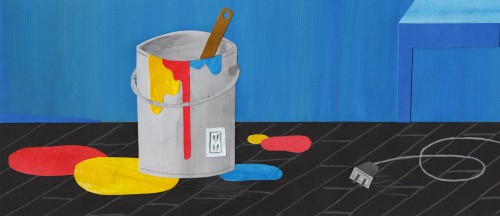
Being creative on demand is hard. In addition to the hours spent physically bringing new ideas to light, there’s also the countless mental hours spent thinking about problems, generating ideas, and evaluating possible solutions. When we’re over-taxed, we can easily become burnt out from having found the limits of our creativity. This gets even more complicated when we don’t truly understand where our creativity comes from.
Many of us operate from a set of heuristics around how the creative process works. We stumble upon some ideas and develop them into truths about the creative process. Eventually, these heuristics develop into a full-blown mythology of creativity. The myths might help us for a time, but when we’ve reached our creative capacity, we need to take a deep look at what we believe and see if there are more evidence-based approaches to the creative life. And the evidence presents some counter-intuitive findings. When you’re stuck or feeling burnt out, here are five proven ways to recharge your creative capacity:
copy
While we rarely acknowledge it, many of the most creative works in history are actually resultant of copying and combining various pre-existing works. Van Gogh copied over 30 different paintings of prior masters to refine his own technique. George Lucas copied the plotline of Joseph Campbell’s “monomyth” mythological to make Star Wars. Even Steve Jobs borrowed the idea of the desktop metaphor for the personal computer from Xerox’s Alto. If you’re at a loss for new ideas, try revisiting and combining successful ideas with your own “flavor” or purpose — you might just stumble into a wholly new combination.
study outside your field
Over time, we tend to accumulate more and more expertise. While this isn’t a bad thing by itself, sometimes it can actually inhibit creative abilities. Research suggests that the creativity and productivity of individuals in various fields tends to reach its peak fairly early on in their career. One possible explanation for this is that as you accumulate knowledge, it becomes easier to judge ideas at the moment you think of them, instead of testing and refining those ideas. Fewer ideas tested can mean less creative work actualized. Keep your mind away from “functional fixedness” by allowing yourself to regularly adopt a beginner’s mindset — if you’re at your creative limit in one field, explore a new field to inspire new ideas.
incubate
We tend to think of creative insight as a flash of brilliance, or a “eureka” moment, even assuming at times that the idea came to use from somewhere beyond ourselves. While insights can feel sudden, they do in fact generate from deep inside our own mind — psychologists have discovered that the feeling of a flash of insight is often the result of a period of incubation. When we’re working hard on a creative problem, our minds can get stuck on repeat coming up with the same, ineffective solutions. Incubation involves taking some time off from the problem, either by relaxing entirely or switching to an unrelated project. This allows the problem to move to the subconscious region of our mind, which continues to work even when our conscious mind isn’t focused on the same wrong ideas.
Sometimes an external event can trigger the right combination of ideas and make us shout “eureka”. Other times we have to consciously return to the problem and generate new ideas. In either case, if you’ve hit a wall, you’re more likely to find useful insight after a time of incubation.
set new constraints
When we hit a creative block, we might be tempted to blame the stagnant project on a lack of resources or the presence of constraints. In reality, constraints help us push to new creative levels. Limitations build a framework for understanding the problem we’re trying to solve, or the project we’re trying to complete.
Without constraints, we’re often at a loss of where to even begin. Research on individual creativity indicates that we can actually open our minds to more creative ideas as well as better connect unrelated thoughts after we experience constraints. That’s why companies like 37Signals build constraints regularly into their work, such as limiting the number of people on a project or the number of features a software product can have. While it can feel frustrating in the moment, the result is a vastly better end product. If you’re stuck, try adding a constraint and see if it helps you better understand your situation.
fight
We tend to think of cohesion as a necessary antecedent of creativity — after all, we all know we’re not supposed to criticize during brainstorming. However, if you look at the work processes from outstandingly creative teams, you find that they fight and have conflicts all the time. Some even structure debate directly into their daily routine — adding task-focused conflict into a brainstorming session can actually increase the number of ideas generated. For instance, Pixar schedules regular meetings for the sole purpose of criticizing a film-in-progress — directors put their project on full display and invite criticism and conflict over what could be done better. These “shredding” sessions are a part of what allows Pixar to churn out blockbuster after blockbuster, and build quite a collection of Oscars. If your project needs a creative boost, try inviting in a team of project-outsiders and build off their constructive criticism.
Each of these methods is not only backed by strong, empirical research, but they’re also being employed by many of today’s most creative companies and teams. If you’ve stretched yourself as far as you can go, try one or all of these strategies to push your creativity a little further.
[via 4ormat]
